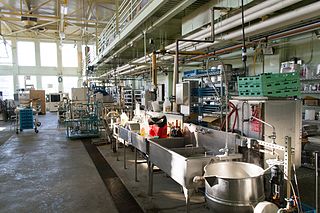 W
WFood science is the basic science and applied science of food; its scope starts at overlap with agricultural science and nutritional science and leads through the scientific aspects of food safety and food processing, informing the development of food technology.
 W
WAcesulfame potassium, also known as acesulfame K or Ace K, is a calorie-free sugar substitute often marketed under the trade names Sunett and Sweet One. In the European Union, it is known under the E number E950. It was discovered accidentally in 1967 by German chemist Karl Clauss at Hoechst AG. In chemical structure, acesulfame potassium is the potassium salt of 6-methyl-1,2,3-oxathiazine-4(3H)-one 2,2-dioxide. It is a white crystalline powder with molecular formula C4H4KNO4S and a molecular weight of 201.24 g/mol.
 W
WAgriculture Week is a weekly agricultural and food science research newspaper reporting on the latest developments in agriculture and food production. Its main topics are agribusiness, Crops, Livestock and Markets. The newspaper is read primarily in the Local North Dakota area. It is published by Vertical News, an imprint of NewsRx, LLC. In 1998 Agriculture Week moved into the online market with their website, which, along with changing the newspaper into a blog like format, introduced their weather, crop prediction, and policy news show, known as "Agweektv". The website is currently being hosted by the Forum Communications Company, or the FCC for short. The TV show and website are watched throughout North America, but the Dakotas, Minnesota, Montana, and the Canadian Shield all have increased views.
 W
WAnnatto is an orange-red condiment and food coloring derived from the seeds of the achiote tree, native to tropical regions from Mexico to Brazil. It is often used to impart a yellow or orange color to foods, but sometimes also for its flavor and aroma. Its scent is described as "slightly peppery with a hint of nutmeg" and flavor as "slightly nutty, sweet and peppery".
 W
WAspartame-acesulfame salt is an artificial sweetener marketed under the name Twinsweet. It is produced by soaking a 2-1 mixture of aspartame and acesulfame potassium in an acidic solution and allowing it to crystallize; moisture and potassium are removed during this process. It is approximately 350 times as sweet as sucrose. It has been given the E number E962.
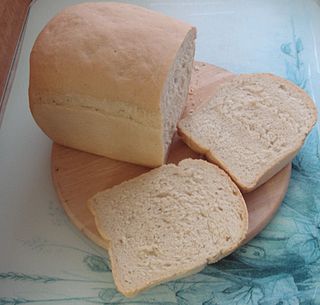 W
WBaking is a method of preparing food that uses dry heat, typically in an oven, but can also be done in hot ashes, or on hot stones. The most common baked item is bread but many other types of foods are baked. Heat is gradually transferred "from the surface of cakes, cookies, and breads to their center. As heat travels through, it transforms batters and doughs into baked goods and more with a firm dry crust and a softer center". Baking can be combined with grilling to produce a hybrid barbecue variant by using both methods simultaneously, or one after the other. Baking is related to barbecuing because the concept of the masonry oven is similar to that of a smoke pit.
 W
WButter grading involves the grading, inspection, assessment and sorting of butter to quantify its quality, freshness, and conformity to legal requirements.
 W
WCaramelization is the browning of sugar, a process used extensively in cooking for the resulting sweet nutty flavor and brown color. The brown colors are produced by three groups of polymers: caramelans (C24H36O18), caramelens (C36H50O25), and caramelins (C125H188O80). As the process occurs, volatile chemicals such as diacetyl are released, producing the characteristic caramel flavor.
 W
WThe cochineal is a scale insect in the suborder Sternorrhyncha, from which the natural dye carmine is derived. A primarily sessile parasite native to tropical and subtropical South America through North America, this insect lives on cacti in the genus Opuntia, feeding on plant moisture and nutrients. The insects are found on the pads of prickly pear cacti, collected by brushing them off the plants, and dried.
 W
WThe Codex Alimentarius is a collection of internationally recognized standards, codes of practice, guidelines, and other recommendations relating to food, food production, food labeling, and food safety.
 W
WCooking oil is plant, animal, or synthetic fat used in frying, baking, and other types of cooking. It is also used in food preparation and flavouring not involving heat, such as salad dressings and bread dippings like bread dips, and may be called edible oil.
 W
WDATEM is an emulsifier primarily used in baking to strengthen the gluten network in dough. It is added to crusty breads, such as rye, to impart a springy, chewy texture. It is also used in the production of biscuits, coffee whiteners, salsa con queso, ice cream and salad dressings.
 W
WDepuration of seafood is the process by which marine or freshwater animals are placed into a clean water environment for a period of time to allow purging of biological contaminants and physical impurities. The most common subjects of depuration are such bivalves as oysters, clams, and mussels.
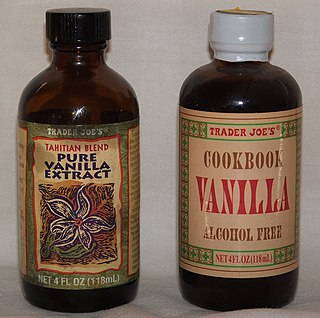 W
WAn extract is a substance made by extracting a part of a raw material, often by using a solvent such as ethanol, oil or water. Extracts may be sold as tinctures, absolutes or in powder form.
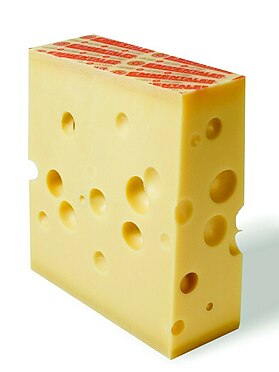 W
WEyes are the round holes that are a characteristic feature of Swiss-type cheese and some Dutch-type cheeses. The eyes are bubbles of carbon dioxide gas. The gas is produced by various species of bacteria in the cheese.
 W
WIn baking, a farinograph measures specific properties of flour. It was first developed and launched in 1928. The farinograph is a tool used for measuring the shear and viscosity of a mixture of flour and water. The primary units of the farinograph are Brabender Units, an arbitrary unit of measuring the viscosity of a fluid.
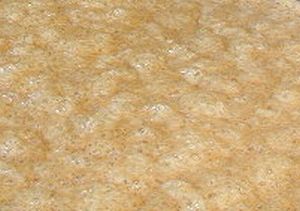 W
WFermentation is a metabolic process that produces chemical changes in organic substrates through the action of enzymes. In biochemistry, it is narrowly defined as the extraction of energy from carbohydrates in the absence of oxygen. In food production, it may more broadly refer to any process in which the activity of microorganisms brings about a desirable change to a foodstuff or beverage. The science of fermentation is known as zymology.
 W
WFermentation in food processing is the process of converting carbohydrates to alcohol or organic acids using microorganisms—yeasts or bacteria—under anaerobic conditions. Fermentation usually implies that the action of microorganisms is desired. The science of fermentation is known as zymology or zymurgy.
 W
WFood additives are substances added to food to preserve flavor or enhance taste, appearance, or other sensory qualities. Some additives have been used for centuries as part of an effort to preserve food, for example vinegar (pickling), salt, (salting), smoke (smoking), sugar (crystallization), etc. This allows for longer-lasting foods such as bacon, sweets or wines. With the advent of processed foods in the second half of the twentieth century, many additives have been introduced, of both natural and artificial origin. Food additives also include substances that may be introduced to food indirectly in the manufacturing process, through packaging, or during storage or transport.
 W
WBrowning is the process of food turning brown due to the chemical reactions that take place within. The process of browning is one of the chemical reactions that take place in food chemistry and represents an interesting research topic regarding health, nutrition, and food technology. Though there are many different ways food chemically changes over time, browning in particular falls into 2 main categories: enzymatic versus non-enzymatic browning processes.
 W
WFood engineering is a scientific, academic, and professional field that interprets and applies principles of engineering, science, and mathematics to food manufacturing and operations, including the processing, production, handling, storage, conservation, control, packaging and distribution of food products. Given its reliance on food science and broader engineering disciplines such as electrical, mechanical, civil, chemical, industrial and agricultural engineering, food engineering is considered a multidisciplinary and narrow field. Due to the complex nature of food materials, food engineering also combines the study of more specific chemical and physical concepts such as biochemistry, microbiology, food chemistry, thermodynamics, transport phenomena, rheology, and heat transfer. Food engineers apply this knowledge to the cost-effective design, production, and commercialization of sustainable, safe, nutritious, healthy, appealing, affordable and high-quality ingredients and foods, as well as to the development of food systems, machinery, and instrumentation.
 W
WFood grading involves the inspection, assessment and sorting of various foods regarding quality, freshness, legal conformity and market value. Food grading often occurs by hand, in which foods are assessed and sorted. Machinery is also used to grade foods, and may involve sorting products by size, shape and quality. For example, machinery can be used to remove spoiled food from fresh product.
 W
WFood moisture analysis involves the whole coverage of the food items in the world because foods are comprising a considerable amount of water rather than other ingredients. Foods are vital components which are consumed by the people at each and every moment for the surviving in the world. Basically there are several kinds of foods are available for the consumption as raw foods, processed foods and modified foods in the market. Moisture content of the food material is important to consider the food is suitable before the consumption, because moisture content affects the physical, chemical aspects of food which relates with the freshness and stability for the storage of the food for a long period of time and the moisture content determine the actual quality of the food before consumption and to the subsequent processing in the food sector by the food producers.
 W
WFood packaging is packaging for food. A package provides protection, tampering resistance, and special physical, chemical, or biological needs. It may bear a nutrition facts label and other information about food being offered for sale.
 W
WFood processing is the transformation of agricultural products into food, or of one form of food into other forms. Food processing includes many forms of processing foods, from grinding grain to make raw flour to home cooking to complex industrial methods used to make convenience foods. Some food processing methods play important roles in reducing food waste and improving food preservation, thus reducing the total environmental impact of agriculture and improving food security.
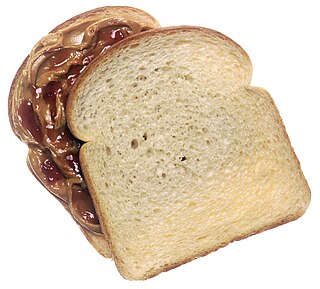 W
WFood rheology is the study of the rheological properties of food, that is, the consistency and flow of food under tightly specified conditions. The consistency, degree of fluidity, and other mechanical properties are important in understanding how long food can be stored, how stable it will remain, and in determining food texture. The acceptability of food products to the consumer is often determined by food texture, such as how spreadable and creamy a food product is. Food rheology is important in quality control during food manufacture and processing. Food rheology terms have been noted since ancient times. In ancient Egypt, bakers judged the consistency of dough by rolling it in their hands.
 W
WFood safety is used as a scientific discipline describing handling, preparation, and storage of food in ways that prevent food-borne illness. The occurrence of two or more cases of a similar illnesses resulting from the ingestion of a common food is known as a food-borne disease outbreak. This includes a number of routines that should be followed to avoid potential health hazards. In this way food safety often overlaps with food defense to prevent harm to consumers. The tracks within this line of thought are safety between industry and the market and then between the market and the consumer. In considering industry to market practices, food safety considerations include the origins of food including the practices relating to food labeling, food hygiene, food additives and pesticide residues, as well as policies on biotechnology and food and guidelines for the management of governmental import and export inspection and certification systems for foods. In considering market to consumer practices, the usual thought is that food ought to be safe in the market and the concern is safe delivery and preparation of the food for the consumer.
 W
WFood sampling is a process used to check that a food is safe and that it does not contain harmful contaminants, or that it contains only permitted additives at acceptable levels, or that it contains the right levels of key ingredients and its label declarations are correct, or to know the levels of nutrients present.
 W
WFood technology is a branch of food science that deals with the production, preservation, quality control and research and development of the food products.
 W
WFoodomics was defined in 2009 as "a discipline that studies the Food and Nutrition domains through the application and integration of advanced -omics technologies to improve consumer's well-being, health, and knowledge". Foodomics requires the combination of food chemistry, biological sciences, and data analysis.
 W
WHomogenization or homogenisation is any of several processes used to make a mixture of two mutually non-soluble liquids the same throughout. This is achieved by turning one of the liquids into a state consisting of extremely small particles distributed uniformly throughout the other liquid. A typical example is the homogenization of milk, where the milk fat globules are reduced in size and dispersed uniformly through the rest of the milk.
 W
WHuman nutrition deals with the provision of essential nutrients in food that are necessary to support human life and good health. Poor nutrition is a chronic problem often linked to poverty, food security, or a poor understanding of nutritional requirements. Malnutrition and its consequences are large contributors to deaths, physical deformities, and disabilities worldwide. Good nutrition is necessary for children to grow physically and mentally, and for normal human biological development.
 W
WIngredient-flavor networks are networks describing the sharing of flavor compounds of culinary ingredients. In the bipartite form, an ingredient-flavor network consist of two different types of nodes: the ingredients used in the recipes and the flavor compounds that contributes to the flavor of each ingredients. The links connecting different types of nodes are undirected, represent certain compound occur in each ingredients. The ingredient-flavor network can also be projected in the ingredient or compound space where nodes are ingredients or compounds, links represents the sharing of the same compounds to different ingredients or the coexistence in the same ingredient of different compounds.
 W
WInverted sugar syrup, also called invert syrup and invert sugar, is an edible mixture of two simple sugars—glucose and fructose—that is made by heating sucrose with water. It is thought to be sweeter than table sugar, and foods that contain invert retain moisture better and crystallize less easily than do those that use table sugar instead. Bakers, who call it invert syrup, may use it more than other sweeteners.
 W
WLactobacillus is a genus of Gram-positive, aerotolerant anaerobes or microaerophilic, rod-shaped, non-spore-forming bacteria. Until March 2020, the genus Lactobacillus comprised over 260 phylogenetically, ecologically, and metabolically diverse species; a taxonomic revision of the genus in 2020 assigned lactobacilli to 25 genera.
 W
WMiraculin is a taste modifier, a glycoprotein extracted from the fruit of Synsepalum dulcificum. The berry, also known as the miracle fruit, was documented by explorer Chevalier des Marchais, who searched for many different fruits during a 1725 excursion to its native West Africa.
 W
WMolecular gastronomy is the scientific approach of nutrition from the perspective of physics and chemistry. The physical properties: force, vector, and mass; and chemical components: molecular structure, formulae, and reactant products of an ingredient are addressed and utilized in the preparation and appreciation of the ingested products. The field differs from the amalgamation of ingredients and application of heat used by early homonids to produce sustenance as a way to acquire nutrients to promote health. It is the constituent of food science that approaches the preparation and enjoyment of nutrition from the perspective of a scientist at the scale of atoms, molecules, and chemicals.
 W
WMother of vinegar is a substance composed of a form of cellulose and acetic acid bacteria that develops on fermenting alcoholic liquids, which turns alcohol into acetic acid with the help of oxygen from the air. It is added to wine, cider, or other alcoholic liquids to produce vinegar.
 W
WMouthfeel refers to the physical sensations in the mouth caused by food or drink, as distinct from taste. It is a fundamental sensory attribute which, along with taste and smell, determines the overall flavor of a food item. Mouthfeel is also sometimes referred to as texture.
 W
WNixtamalization is a process for the preparation of maize (corn), or other grain, in which the corn is soaked and cooked in an alkaline solution, usually limewater, washed, and then hulled. This process removes up to 97%–100% of aflatoxins from mycotoxin-contaminated corn. The term can also refer to the removal via an alkali process of the pericarp from other grains such as sorghum.
 W
WA nutraceutical or 'bioceutical' is a pharmaceutical alternative which claims physiological benefits. In the US, "nutraceuticals" are largely unregulated, as they exist in the same category as dietary supplements and food additives by the FDA, under the authority of the Federal Food, Drug, and Cosmetic Act.
 W
WFree acidity is an important parameter that defines the quality of olive oil and is defined as a percentage as grams of free fatty acids in 100 grams of oil. As defined by the European Commission regulation No. 2568/91 and subsequent amendments, the highest quality olive oil must feature a free acidity lower than 0.8%. Virgin olive oil is characterized by acidity between 0.8% and 2%, while lampante olive oil features a free acidity higher than 2%. The increase of free acidity in olive oil is due to free fatty acids that are released from triglycerides.
 W
WPaprika oleoresin is an oil-soluble extract from the fruits of Capsicum annuum or Capsicum frutescens, and is primarily used as a colouring and/or flavouring in food products. It is composed of vegetable oil, capsaicin, the main flavouring compound giving pungency in higher concentrations, and capsanthin and capsorubin, the main colouring compounds. It is much milder than capsicum oleoresin, often containing no capsaicin at all.
 W
WPasteurization or pasteurisation is a process in which packaged and non-packaged foods are treated with mild heat, usually to less than 100 °C (212 °F), to eliminate pathogens and extend shelf life. The process is intended to destroy or deactivate organisms and enzymes that contribute to spoilage or risk of disease, including vegetative bacteria, but not bacterial spores.
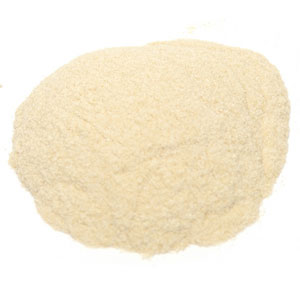 W
WPectin is a structural acidic heteropolysaccharide contained in the primary and middle lamella and cell walls of terrestrial plants. Its main component is galacturonic acid, a sugar acid derived from galactose. It was first isolated and described in 1825 by Henri Braconnot. It is produced commercially as a white to light brown powder, mainly extracted from citrus fruits, and is used in food as a gelling agent, particularly in jams and jellies. It is also used in dessert fillings, medicines, sweets, as a stabilizer in fruit juices and milk drinks, and as a source of dietary fiber.
 W
WPhytic acid is a six-fold dihydrogenphosphate ester of inositol, also called inositol hexakisphosphate (IP6) or inositol polyphosphate. At physiological pH, the phosphates are partially ionized, resulting in the phytate anion.
 W
WA refractometer is a laboratory or field device for the measurement of an index of refraction (refractometry). The index of refraction is calculated from Snell's law while for mixtures, the index of refraction can be calculated from the composition of the material using several mixing rules such as the Gladstone–Dale relation and Lorentz–Lorenz equation.
 W
WA retort pouch or retortable pouch is a type of food packaging made from a laminate of flexible plastic and metal foils. It allows the sterile packaging of a wide variety of food and drink handled by aseptic processing, and is used as an alternative to traditional industrial canning methods. Packaged foods range from water to fully cooked, thermo-stabilized (heat-treated) high-caloric meals such as Meals, Ready-to-Eat (MREs) which can be eaten cold, warmed by submersing in hot water, or through the use of a flameless ration heater, a meal component introduced by the military in 1992. Retort pouches are used in field rations, space food, fish products, camping food, instant noodles, and brands such as Capri Sun and Tasty Bite.
 W
WRolled oats are a type of lightly processed whole-grain food. Traditionally, they are made from oat groats that have been dehusked and steamed, before being rolled into flat flakes under heavy rollers and then stabilized by being lightly toasted.
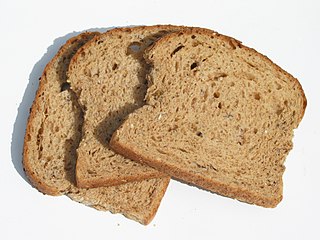 W
WStaling, or "going stale", is a chemical and physical process in bread and similar foods that reduces their palatability - stale bread is dry and hard.
 W
WSteam Infusion is a direct-contact heating process in which steam condenses on the surface of a pumpable food product. Its primary use is for the gentle and rapid heating of a variety of food ingredients and products including milk, cream, soymilk, ketchup, soups and sauces.
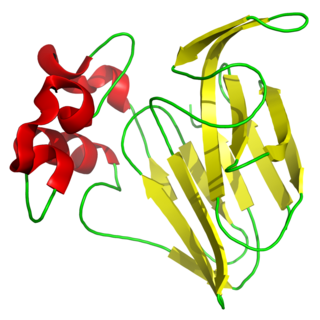 W
WThaumatin is a low-calorie sweetener and flavour modifier. The protein is often used primarily for its flavour-modifying properties and not exclusively as a sweetener.
 W
WVacuum evaporation is the process of causing the pressure in a liquid-filled container to be reduced below the vapor pressure of the liquid, causing the liquid to evaporate at a lower temperature than normal. Although the process can be applied to any type of liquid at any vapor pressure, it is generally used to describe the boiling of water by lowering the container's internal pressure below standard atmospheric pressure and causing the water to boil at room temperature.
 W
WWater activity (aw) is the partial vapor pressure of water in a solution divided by the standard state partial vapor pressure of water. In the field of food science, the standard state is most often defined as the partial vapor pressure of pure water at the same temperature. Using this particular definition, pure distilled water has a water activity of exactly one. As temperature increases, aw typically increases, except in some products with crystalline salt or sugar.